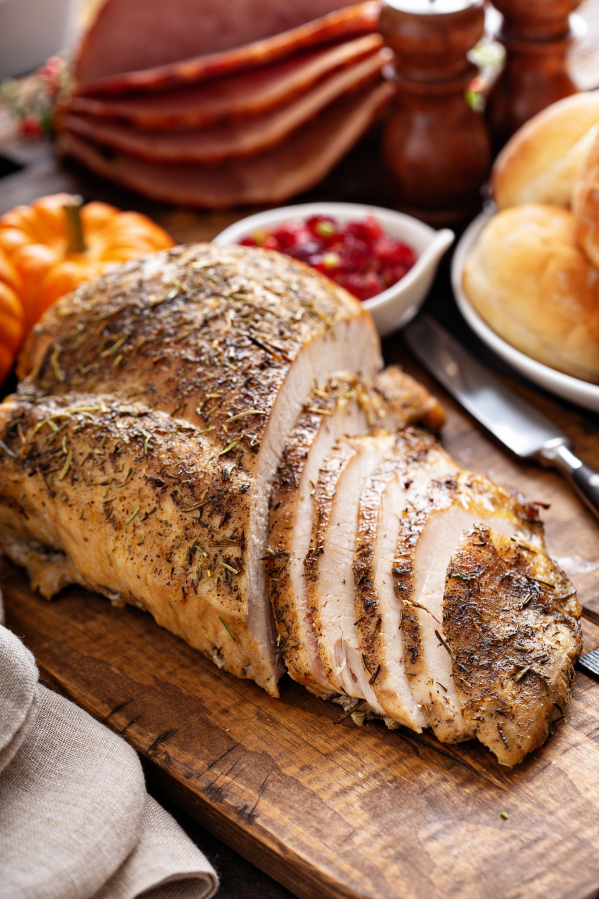Note: This story originally published in 2020
My own Thanksgiving dinner this year will be for just two, plus a Zoom call (assuming the system doesn’t crash with everyone trying to use it at the same time). So instead of getting a big bird and defrosting it for a week, I’ll be going the smaller route and just cooking a breast.
Incidentally, don’t forget that frozen turkey breasts have to be thawed, too. Plan on 1 ½ to 2 days in the refrigerator, depending on the size.
For the purposes of this story, though not for actual Thanksgiving, I decided to make four different turkey breasts. Three are variations on the traditional Thanksgiving roast turkey, and one is a little unusual, just for fun.
Unfortunately, the turkey breasts I bought for this story did not happen to have skin on them. They were from a well-known brand (I’ll call it Dutterdall), and nothing on the packaging indicated that they were skinless. So all of my efforts to give them a crispy skin went to waste, as there was no skin to crisp.



